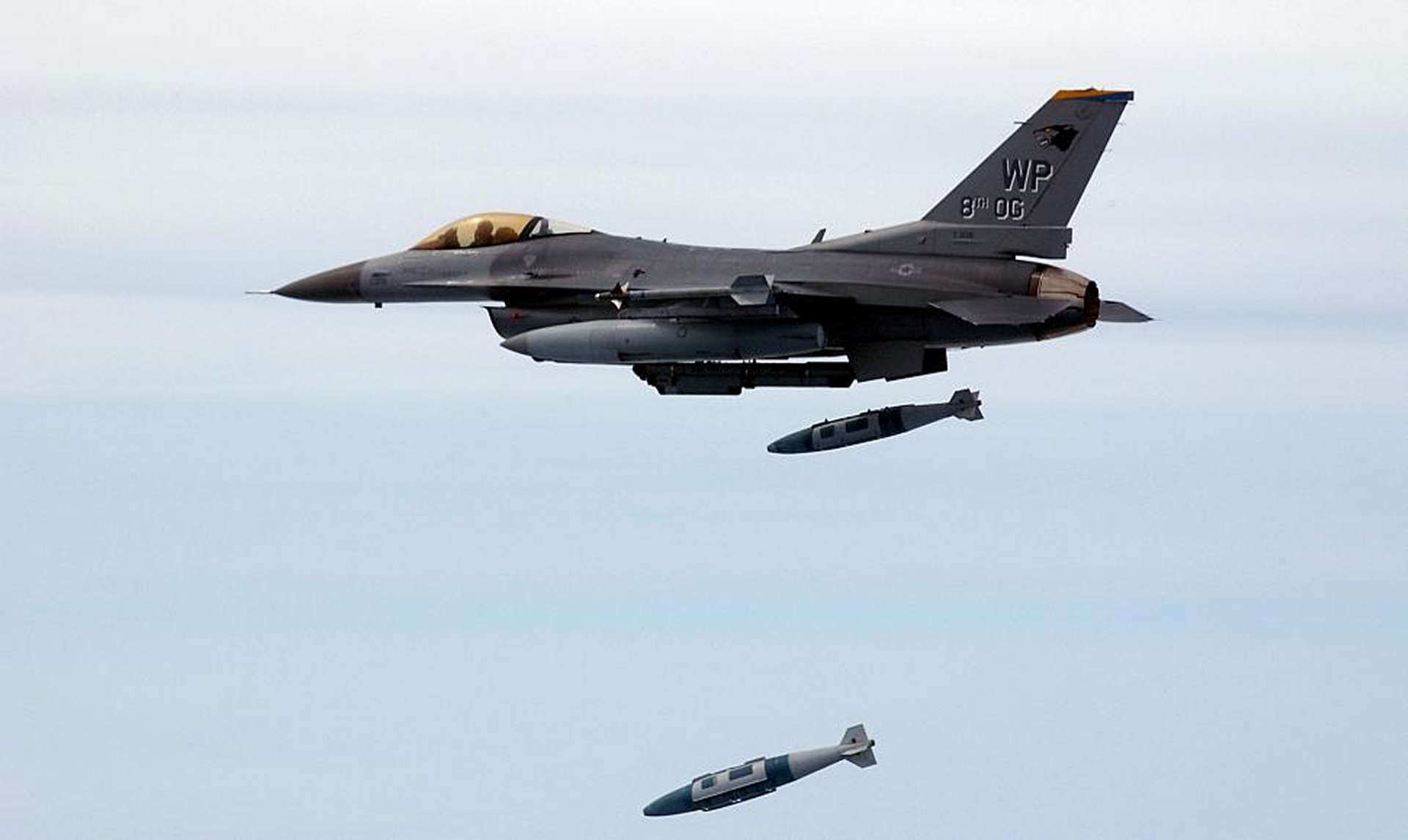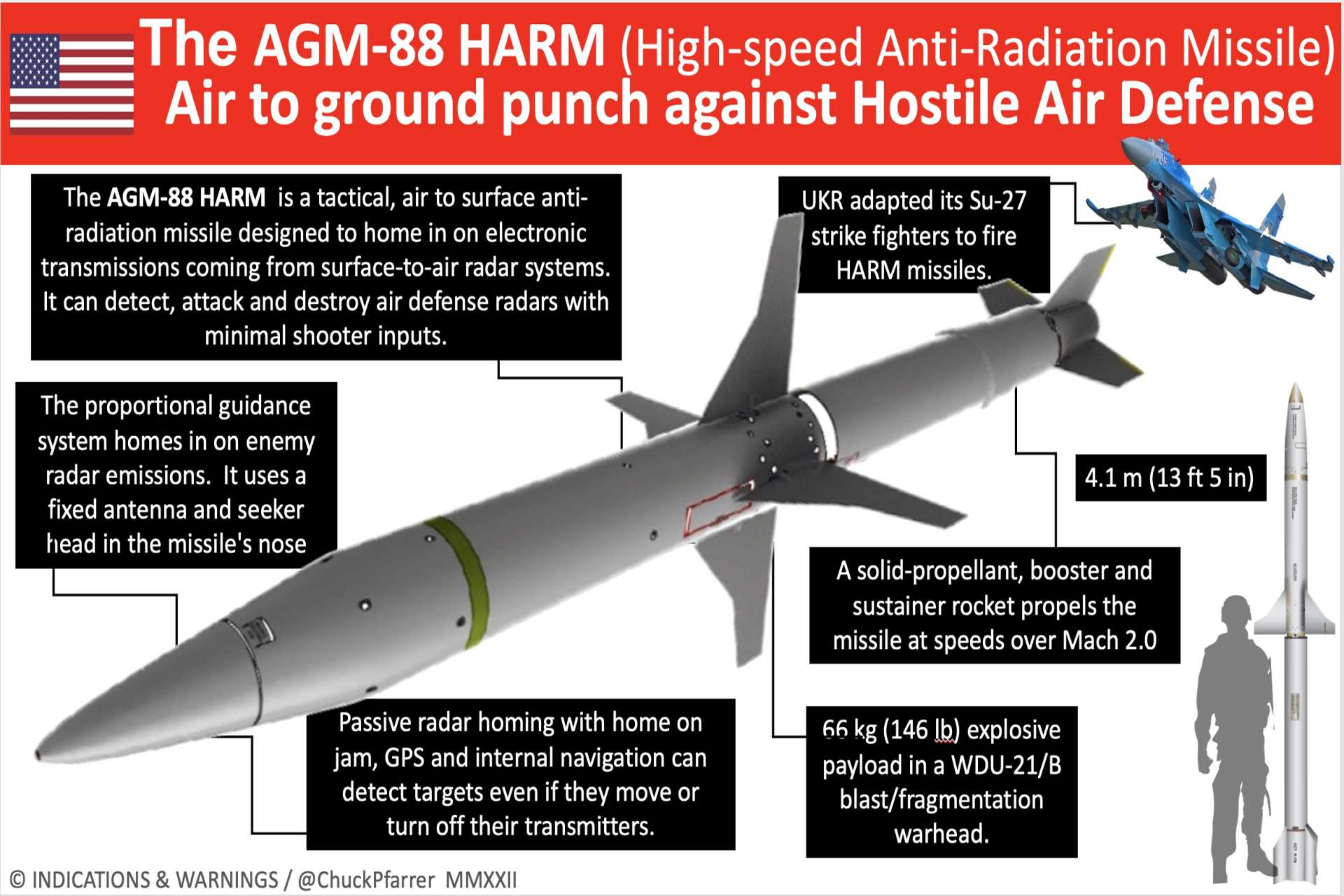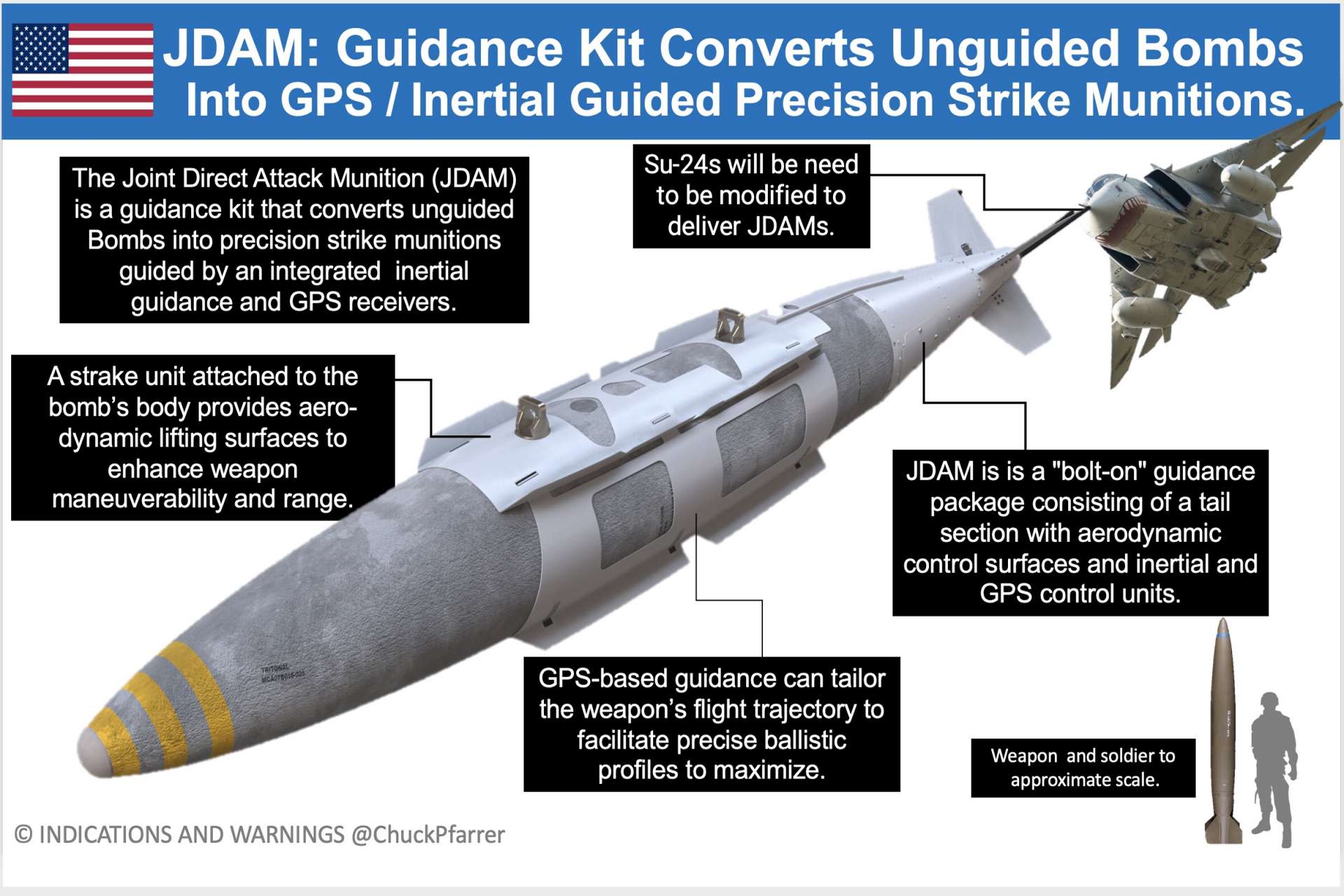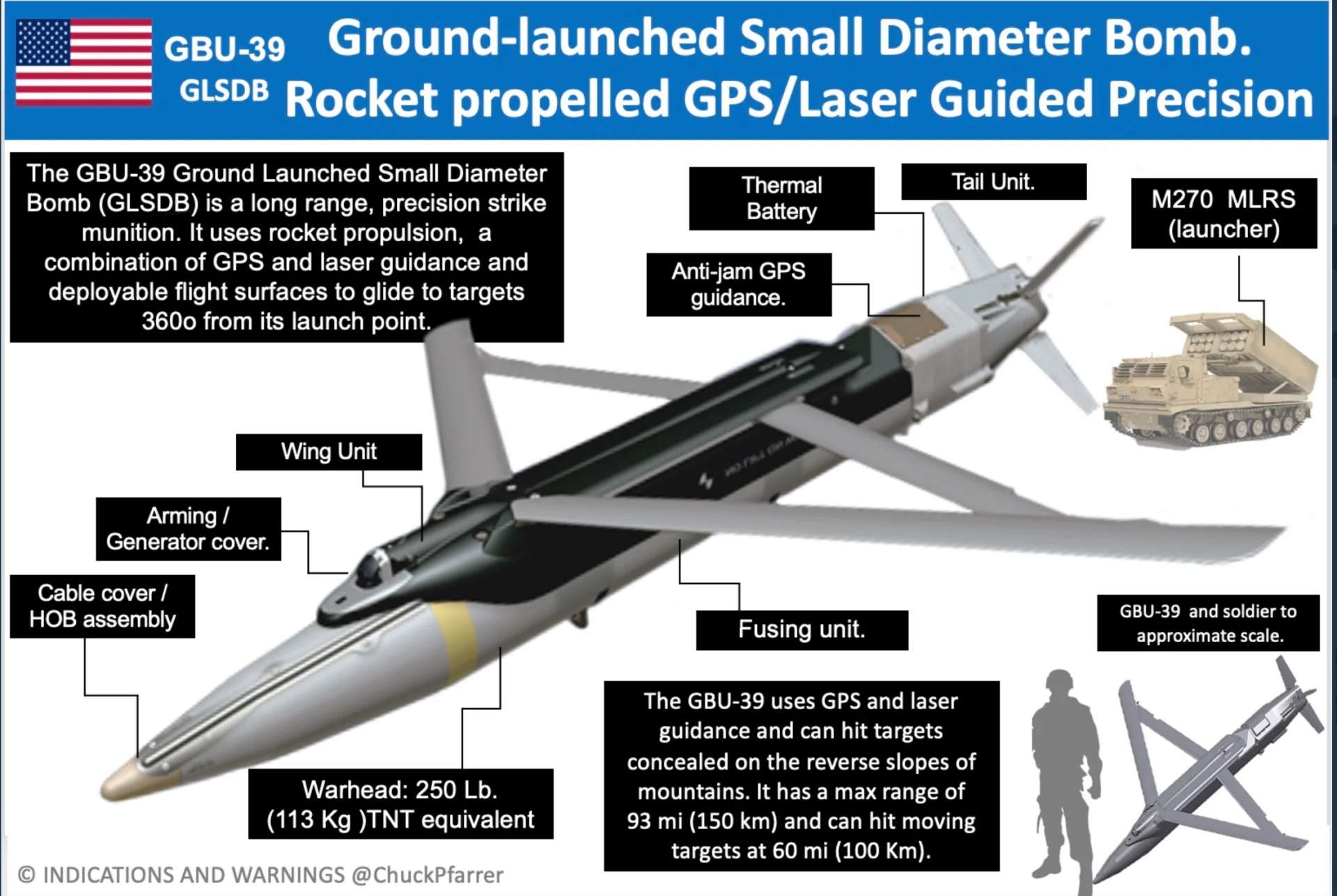US to Supply Ukraine with Bombs and Missiles to Equip Donated F-16 Fighter Jets

{loadposition bannertop}
{loadposition sidebarpub}
On July 30, 2024, The Wall Street Journal reported that the United States will equip dozens of F-16 multirole fighter jets destined for Ukraine with missiles and other American-made armaments. This decision marks a crucial step in escalating military aid to Kyiv amidst its prolonged conflict with Russia.Follow Army Recognition on Google News at this link
F-16 Multirole Fighter Jet dropping a pair of 2000lb GBU-31 JDAM’s (Picture source: US DoD)
Ukraine anticipates the delivery of 79 F-16 jets from the Netherlands, Denmark, Belgium, and Norway, with the first 20 expected to arrive by the end of the year. However, facing limitations in their own armament stocks, these countries have opted for American support to arm these aircraft.
According to a senior Pentagon official cited by the WSJ, the United States will provide air-to-ground munitions, precision guidance kits for bombs, and advanced air-to-air missiles. “We are confident that we can supply all this, at least the critical volumes they need,” the official stated.
The specific armaments will include AGM-88 HARM missiles, long-range JDAM munitions that convert conventional bombs into smart, guided weapons, and small precision-guided munitions known as GLSDB.
AGM-88 HARM Missiles
AGM-88 High-speed Anti-Radiation Missiles (HARM) are specialized armaments designed to detect and destroy enemy radars by targeting their emissions. Used to suppress enemy air defenses by neutralizing their radar systems, these missiles are crucial for offensive air operations, allowing aircraft to conduct their missions with reduced risk of detection and attack by anti-air systems.
AGM-88 High-speed Anti-Radiation Missiles (HARM) (Picture source: Chuck Pfarrer)
Long-Range JDAM Munitions
Joint Direct Attack Munitions (JDAM) transform unguided bombs, otherwise known as “dumb bombs,” into precision-guided weapons. They are equipped with guidance kits that include GPS navigation systems and control fins, enabling precise strikes even over long distances. These munitions can be used in various weather conditions and are known for their accuracy, thus reducing the risk of collateral damage and increasing the effectiveness of strategic strikes.
Joint Direct Attack Munitions (JDAM) transform unguided bombs, otherwise known as “dumb bombs,” into precision-guided weapons. (Picture source: Chuck Pfarrer)
Small Precision-Guided Munitions GLSDB
The Small Diameter Bomb Glide (GLSDB) is a precision munition that combines guidance capability and small size for a discreet and effective approach. These munitions are designed to target fortified infrastructures, air defenses, and other high-value targets with minimal collateral damage. Their reduced size also allows aircraft to carry a greater number of these bombs, thus enhancing the weapon’s capacity while maintaining high precision during strikes.
Small Diameter Bomb Glide (GLSDB) (Picture source: Chuck Pfarrer)
This assistance comes as the Ukrainian Air Force, primarily composed of Soviet-era aircraft, has been significantly weakened after years of conflict. The arrival of the equipped F-16s is expected to provide a substantial aerial advantage to Ukraine.
U.S. Secretary of State Antony Blinken had previously announced on July 10 that the first F-16s from the Netherlands and Denmark were en route to Ukraine, although no official delivery has been confirmed yet. This initiative illustrates the ongoing commitment of the United States and its European allies to support Ukraine against Russian aggression, highlighting the strategic importance of this conflict on the international geopolitical chessboard.
On July 10th, at the opening of the NATO summit in Washington, Denmark, the United States, and the Netherlands announced the delivery of the first F-16s to Ukraine. These modern jets, equipped according to NATO standards, will significantly strengthen the Ukrainian Air Force, enabling missions such as the destruction of Russian air defenses or air combat, depending on the armament and pods installed.
However, the operation of the F-16s by Ukraine faces major logistical and strategic challenges. To protect these aircraft from potential attacks, suitable Ukrainian bases must be located in the west of the country, far from the active conflict zones in the east, requiring a 2000 km return flight for missions. As Ukraine lacks aerial refueling capabilities, it becomes crucial to develop refueling bases behind the lines in the east to support extended operations. The creation of these bases would require complex logistics to allow rapid refueling of fuel and munitions, often in less than ten minutes, to maintain sortie effectiveness.
The F-16s must also operate at low altitudes to minimize detection by SAM anti-aircraft radar, thereby increasing their fuel consumption and reducing their effectiveness for high-altitude precision strikes. With their fuel capacities, these aircraft have a flight range of 90 minutes to about 2.5 hours.
Initially, the role of the F-16s, given the density of Russian air defenses, seems to be limited to reinforcing Ukraine’s air defenses, particularly for intercepting aerial targets, rather than conducting strikes against Russian forces near the front. This limited operational framework highlights the gap between Ukrainian expectations and Western support, with critics claiming that the planes are too few and arrive too late to substantially alter the course of the conflict.
This situation also underscores the vulnerability of ground infrastructure, as Ukrainian air bases are within range of Russian missiles, further complicating the protection of the F-16s without robust facilities like concrete hangars. Therefore, Ukraine uses camouflage techniques and decoys to protect its aircraft.
Analyses are mixed, with some viewing the F-16s as a significant psychological boost rather than a major tactical change on the battlefield. So far, no restrictions on the use of these aircraft have been disclosed by the Western nations providing them, although Ukraine is limited in using certain Western weapons to strike targets in Russia.

{loadposition bannertop}
{loadposition sidebarpub}
On July 30, 2024, The Wall Street Journal reported that the United States will equip dozens of F-16 multirole fighter jets destined for Ukraine with missiles and other American-made armaments. This decision marks a crucial step in escalating military aid to Kyiv amidst its prolonged conflict with Russia.
F-16 Multirole Fighter Jet dropping a pair of 2000lb GBU-31 JDAM’s (Picture source: US DoD)
Ukraine anticipates the delivery of 79 F-16 jets from the Netherlands, Denmark, Belgium, and Norway, with the first 20 expected to arrive by the end of the year. However, facing limitations in their own armament stocks, these countries have opted for American support to arm these aircraft.
According to a senior Pentagon official cited by the WSJ, the United States will provide air-to-ground munitions, precision guidance kits for bombs, and advanced air-to-air missiles. “We are confident that we can supply all this, at least the critical volumes they need,” the official stated.
The specific armaments will include AGM-88 HARM missiles, long-range JDAM munitions that convert conventional bombs into smart, guided weapons, and small precision-guided munitions known as GLSDB.
AGM-88 HARM Missiles
AGM-88 High-speed Anti-Radiation Missiles (HARM) are specialized armaments designed to detect and destroy enemy radars by targeting their emissions. Used to suppress enemy air defenses by neutralizing their radar systems, these missiles are crucial for offensive air operations, allowing aircraft to conduct their missions with reduced risk of detection and attack by anti-air systems.

AGM-88 High-speed Anti-Radiation Missiles (HARM) (Picture source: Chuck Pfarrer)
Long-Range JDAM Munitions
Joint Direct Attack Munitions (JDAM) transform unguided bombs, otherwise known as “dumb bombs,” into precision-guided weapons. They are equipped with guidance kits that include GPS navigation systems and control fins, enabling precise strikes even over long distances. These munitions can be used in various weather conditions and are known for their accuracy, thus reducing the risk of collateral damage and increasing the effectiveness of strategic strikes.

Joint Direct Attack Munitions (JDAM) transform unguided bombs, otherwise known as “dumb bombs,” into precision-guided weapons. (Picture source: Chuck Pfarrer)
Small Precision-Guided Munitions GLSDB
The Small Diameter Bomb Glide (GLSDB) is a precision munition that combines guidance capability and small size for a discreet and effective approach. These munitions are designed to target fortified infrastructures, air defenses, and other high-value targets with minimal collateral damage. Their reduced size also allows aircraft to carry a greater number of these bombs, thus enhancing the weapon’s capacity while maintaining high precision during strikes.

Small Diameter Bomb Glide (GLSDB) (Picture source: Chuck Pfarrer)
This assistance comes as the Ukrainian Air Force, primarily composed of Soviet-era aircraft, has been significantly weakened after years of conflict. The arrival of the equipped F-16s is expected to provide a substantial aerial advantage to Ukraine.
U.S. Secretary of State Antony Blinken had previously announced on July 10 that the first F-16s from the Netherlands and Denmark were en route to Ukraine, although no official delivery has been confirmed yet. This initiative illustrates the ongoing commitment of the United States and its European allies to support Ukraine against Russian aggression, highlighting the strategic importance of this conflict on the international geopolitical chessboard.
On July 10th, at the opening of the NATO summit in Washington, Denmark, the United States, and the Netherlands announced the delivery of the first F-16s to Ukraine. These modern jets, equipped according to NATO standards, will significantly strengthen the Ukrainian Air Force, enabling missions such as the destruction of Russian air defenses or air combat, depending on the armament and pods installed.
However, the operation of the F-16s by Ukraine faces major logistical and strategic challenges. To protect these aircraft from potential attacks, suitable Ukrainian bases must be located in the west of the country, far from the active conflict zones in the east, requiring a 2000 km return flight for missions. As Ukraine lacks aerial refueling capabilities, it becomes crucial to develop refueling bases behind the lines in the east to support extended operations. The creation of these bases would require complex logistics to allow rapid refueling of fuel and munitions, often in less than ten minutes, to maintain sortie effectiveness.
The F-16s must also operate at low altitudes to minimize detection by SAM anti-aircraft radar, thereby increasing their fuel consumption and reducing their effectiveness for high-altitude precision strikes. With their fuel capacities, these aircraft have a flight range of 90 minutes to about 2.5 hours.
Initially, the role of the F-16s, given the density of Russian air defenses, seems to be limited to reinforcing Ukraine’s air defenses, particularly for intercepting aerial targets, rather than conducting strikes against Russian forces near the front. This limited operational framework highlights the gap between Ukrainian expectations and Western support, with critics claiming that the planes are too few and arrive too late to substantially alter the course of the conflict.
This situation also underscores the vulnerability of ground infrastructure, as Ukrainian air bases are within range of Russian missiles, further complicating the protection of the F-16s without robust facilities like concrete hangars. Therefore, Ukraine uses camouflage techniques and decoys to protect its aircraft.
Analyses are mixed, with some viewing the F-16s as a significant psychological boost rather than a major tactical change on the battlefield. So far, no restrictions on the use of these aircraft have been disclosed by the Western nations providing them, although Ukraine is limited in using certain Western weapons to strike targets in Russia.




